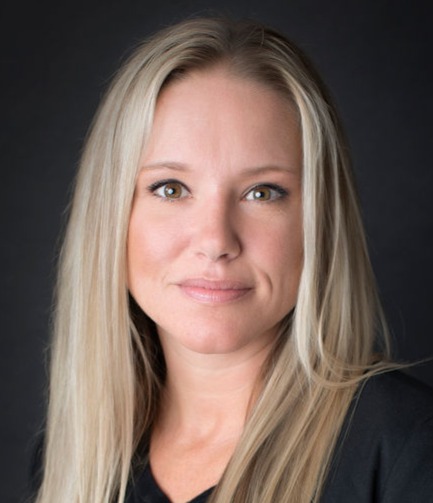The Journey to Operational Excellence Part 3 – Care Quality + Reimbursement
- jramieri

- Apr 5, 2023
- 5 min read

Value-based purchasing (VBP). These three words promise tremendous influence on patient and resident clinical outcomes as well as the financial stability of the long-term care business environment. For the final installment of our blog, Journey to Operational Excellence, we will take a closer look at the direct impact of increased federal oversight of care quality, outcomes, and repayment models in post-acute care.
Several years ago, long before the pandemic, the Centers for Medicare and Medicaid (CMS) enacted care quality requirements with direct ties to reimbursement. Under Section 215 of the Protecting Access to Medicare Act of 2014, Congress required the Secretary of the Department of Health and Human Services to establish a Skilled Nursing Facility Value Based Purchasing (SNF VBP) program. This program, which established new measures for evaluating care quality provided in nursing homes, went into effect on October 1, 2018, and is funded by a 2% reduction in Medicare fee-for-service (FFS) Part A payments with 50-70% required redistributions.
For fiscal year (FY) 2024, skilled nursing facilities participating in SNF VBP receive incentive payments under Medicare’s SNF Prospective Payment System (PPS) with reimbursements assessed on a single care quality measure, All Cause Readmissions. While the program does not explicitly require skilled nursing facilities to address care quality concerns, in my opinion, SNFs would benefit from actively mitigating risk associated with hospital readmissions. Survey tags and fines associated with unresolved all cause readmissions bring an increased risk for poor outcomes and ultimately, reduced reimbursements.
But Wait, There’s More
In a November 2021 Care Quality Bulletin, CMS outlined their intention to increase regulatory oversight in nursing homes, including a targeted approach to compliance with established standards for abuse and neglect, infection control and prevention, violations of transfer and discharge requirements, insufficient staffing, nurse competency and care quality.
During the State of the Union in early 2022, President Biden doubled down on these efforts and committed to, among other things, improving care quality and safety in nursing homes and strengthening the Skilled Nursing Home Value Based Purchasing program. Several specific proposed payment model changes include staff retention, resident experience, and the creation of a new federal minimum staffing requirement. In July, CMS began including staff retention and turnover data on the Care Compare website, furthering the President’s commitment to improve staffing in nursing homes.
Throughout 2022, post-acute care advocates highlighted that increased federal oversight without expanded government assistance, (e.g., chronically underfunded Medicaid reimbursement program), may result in added financial strain for skilled nursing operators who are still today contending with an enduring pandemic.
Cheers to the New Year – Home Health Value Based Purchasing Has Arrived
The long delayed and much anticipated Home Health Value Based Purchasing (HH VBP) program arrived on January 1, 2023. Ok, much anticipated may be a bit of a stretch but nevertheless, HH VBP is here. The program as it exists today is an expanded model of the five year, nine-state pilot that concluded in 2021.
The HH VBP pilot program was aimed at supporting improvements in care quality and efficiency of care delivery in Medicare-certified home health agencies around the country. The objective of the model was to identify and:
Incentivize better care quality
Reward greater care efficiency
Study quality + efficiency measures in the home health setting
Enhance the existing reporting process
The model advanced the Department of Health and Human Services’ efforts to create a comprehensive healthcare system that secures superior care quality and reduces unnecessary financial outlay and ultimately, supports healthier communities and their residents.
So, you can see where I’m going here. CMS is taking deliberate action to improve care quality and delivery in post-acute care. Skilled nursing operators were the first to appreciate increased federal oversight and now, home health agencies are joining the value-based purchasing movement.
Could Senior Living Be Next?
In my opinion, CMS will continue expanding regulatory oversight into other healthcare markets.
This belief is echoed by the American Health Care Association and National Center for Assisted Living (AHCA/NCAL). In a September 15, 2022, press release, AHCA/NCAL offered that while adjustments to Medicare compensation and delivery methods may not necessarily be intended to bring direct impact to assisted living operators, these modifications can result in ripple effects in senior living, as most residents are Medicare beneficiaries. In addition, as hospital and skilled nursing payment models become interconnected with hospital readmission rates and other care quality measures, acute and post-acute care providers could very soon, if not already, view assisted living communities as their newest ally in the drive to enhance care quality outcomes and improve financial stability of their organizations.
Throughout the pandemic, assisted living operators have experienced significant increases in individual state regulations and this trend does not appear to be waning. In fact, according to Jill Schewe, NCAL’s director of policy and regulatory affairs, “States are making changes as they determine how to best serve their specific resident populations in the years ahead, and we anticipate this trend will continue.”
The Role of Technology in the Journey to Operational Excellence – It’s All Connected
I believe a significant step in realizing a successful journey to operational excellence includes an intentional investment in technology that advances workflow automation and delivers a significant reduction in the administrative burden currently experienced by leadership at every level of your organization. One that assembles census, labor, procurement, care quality and more into a single source, a unified operations platform, that quickly becomes the central hub of your business operations.
Given the increased federal and state regulatory oversight in skilled nursing and senior living, time is of the essence to prioritize funding for an innovative solution that will radically transform your business operations as it exists today. In my opinion, while value-based purchasing does not currently play a role in the reimbursement picture for senior living, expanded state requirements for senior living operators enacted throughout the pandemic, sets the stage for added regulatory oversight in the years to come.
However, you don’t have to wait for changing regulations. You can begin realizing the tangible impacts on care quality, staffing recruitment and retention, supply chain management and more by implementing a unified operations platform today.
Removing the manual and automating the analysis provides your organization with confidence to take the first steps on the journey to margin recovery and ultimately, a state of operational excellence.
Throughout this series, we have discussed the incredible opportunity that resides within the data you use every day. Your data illustrates the business of your operations, so to speak, and harnessing the power of this information provides critical insights for your organization, if you can find the time to aggregate, analyze, and act on it.
With CareWork, make your care work easier.



